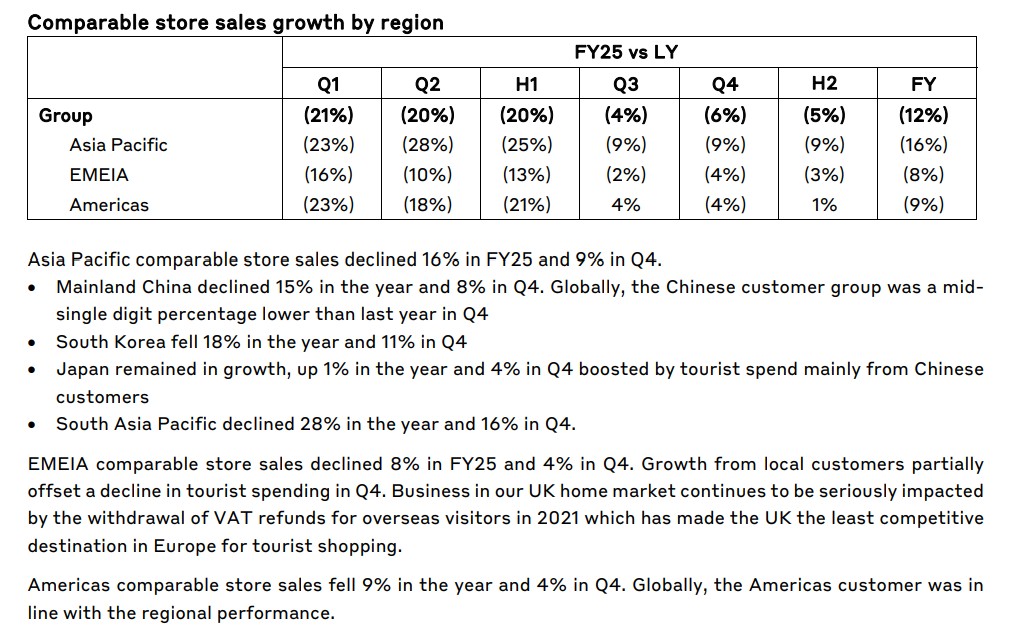
Burberry to cut 1,700 jobs globally as part of strategic ‘changes’: Annual Report
Strategic HR#RightsizingTheWorkforce#Layoffs#HRCommunity
Burberry, a leading luxury fashion brand, is planning to cut 1,700 jobs globally, according to recent media reports.
In a statement published on May 14, 2025, the company’s Chief Executive Officer, Joshua Schulman—who stepped into the role in July last year—emphasised refocusing on the brand’s core strengths to improve performance and profitability. He stated, “After a challenging first half, we have moved at pace to implement Burberry Forward, our strategic plan to reignite brand desire, improve our performance and drive long-term value creation. Our customers are responding to our Timeless British Luxury brand expression.”
He explained how the company is working to restore its broader popularity among consumers—especially through its signature items—and that, with strategic realignments, it aims to achieve steady, long-term growth and profitability. “While we are operating against a difficult macroeconomic backdrop and are still in the early stages of our turnaround, I am more optimistic than ever that Burberry’s best days are ahead and that we will deliver sustainable profitable growth over time,” he added.
Where are the job cuts taking place?
Hinting at the people-related cuts in its preliminary report, the company stated: “Today, we are announcing organisational changes aimed at enhancing collaboration across our business, increasing our agility, and driving efficiency and profitability, while protecting our investment in consumer-facing areas. Reimagining Burberry in this way will ensure that the organisation is fit for the future in a demanding and dynamic global market.”
The proposed changes include cost-cutting measures, some operational shifts, and reinvestments in growth areas.
“We expect these proposed incremental savings to come from operating expenses—with increased efficiency of spend in procurement and real estate—and a reduction in people-related costs, which could impact around 1,700 roles globally over the life of the programme, subject to consultation where applicable.”
The company expects to incur one-time costs related to employee severance, redundancy payouts, and other restructuring expenses as part of its cost-saving efforts.
“The associated one-off costs across both programmes, which are largely cash, are expected to total around £80m (£29m in exceptional costs in FY25, with the balance in FY26).”
According to media reports, the cost-cutting will mostly impact employees in manufacturing and office-based roles in the United Kingdom, where Burberry’s main production units are located, along with Italy. The company also works with a global supplier network, predominantly in Europe.
The company also addressed current business headwinds, including geopolitical developments and potential brand risks, such as “an increase in geopolitical tension which leads to incremental unmitigated tariff risks compared to the central planning scenario,” and the possibility of “a significant reputational incident, such as negative sentiment propagated through social media.”

Burberry’s workforce and retention challenges in the Middle East
According to Statista, the company employs over 9,000 workers globally. In the Europe, Middle East, India, and Africa (EMEIA) region, it had 4,591 employees as of March last year. In the Middle East alone—encompassing the UAE, Saudi Arabia, Qatar, Kuwait, and Bahrain—the brand currently employs around 500 people, mostly in retail and distribution roles.
Despite the cuts, Burberry reportedly continues to offer job opportunities in the Middle East, especially in retail roles such as Store Manager, Client Advisor, and Sales.
You may also like:
- HR Tech + Data = Impact: Key skills HR professionals need to thrive in the era of People Analytics
- Abu Dhabi’s DoH shuts down 4 healthcare facilities for sick leave scam; Staff under legal investigation
- Emirates to pay bonus worth nearly 40% of annual basic salary to eligible employees: Annual Report
- Here's why MHRSD introduced mandatory 'Occupational Fitness Tests' for all employees
For the brand to sustain its operations in the Middle East region, it is crucial to consider the evolving needs of the luxury retail workforce. A recent report underlined that more than half of the region's workforce in the luxury retail sector is ready to quit if their needs are overlooked by the brands.
The brands, challenged by geopolitical crises and other reputational damages, are clearly facing difficulties in retaining talent there. Luxury retail workers will continue their roles only if they receive a good work-life balance, skill development opportunities, and benefits beyond paychecks.









